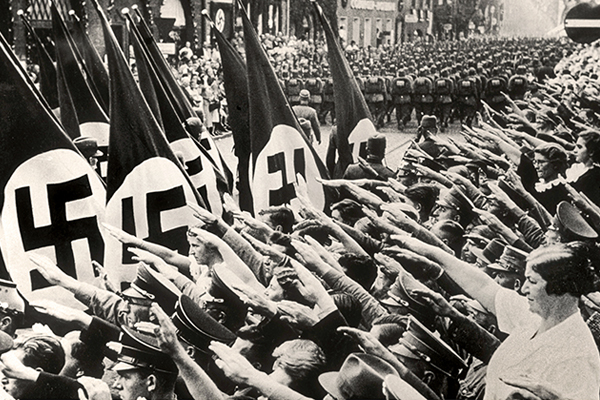
People salute Hitler while attending a Nazi Party parade in Nuremberg, Germany, 1937. Courtesy of Shawshots/Alamy Stock Photo
Recent events remind us of the ever-present dangers of hatred and propaganda. Some individuals throughout history and today have embraced hate, and even murder, to fulfill their own needs.
Personal grievances and hardship drove nurse Pauline Kneissler to become a member of the Nazi Party in 1937. Peer pressure eventually influenced her to kill on behalf of the German government. A half century later, loneliness and bullying left American Christian Picciolini vulnerable to a white supremacist organization, which encouraged him to channel his emotions into hate and violence against Jews and other minority groups.
Amid a rise in antisemitic incidents and extremism more than 75 years after the Holocaust, join experts to explore the reasons why some people in search of belonging use racism, conspiracy theories, and antisemitic lies to justify hate and violence.
Speakers
Dr. Patricia Heberer Rice, Senior Historian, United States Holocaust Memorial Museum
Dr. Arie Kruglanski, Holocaust Survivor, Terrorism Expert, and Psychology Professor, University of Maryland
Moderator
Dr. Edna Friedberg, Historian, United States Holocaust Memorial Museum
Watch live at facebook.com/holocaustmuseum. You do not need a Facebook account to view our program. After the live broadcast, the recording will be available to watch on demand on the Museum's Facebook page.
